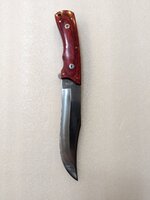Navigation
Install the SWFA app
How to install the app on iOS
Follow along with the video below to see how to install our site as a web app on your home screen.
Note: This feature may not be available in some browsers.
More Options
You are using an outdated browser
The browser you are using is likely incompatible with our website. We recommend upgrading your current browser or installing an alternative.
JavaScript is disabled
Our website requires JavaScript to function properly. For a better experience, please enable JavaScript in your browser settings before proceeding.
-
Join the #1 community for gun owners of the Southwest
We believe the 2nd Amendment is best defended through grass-roots organization, education, and advocacy centered around individual gun owners. It is our mission to encourage, organize, and support these efforts throughout Arizona, Nevada, Utah, Colorado, and New Mexico.Free Membership Benefits
- Fewer banner ads
- Buy, sell, and trade in our classified section
- Discuss firearms and all aspects of firearm ownership
- Join others in organizing against anti-gun legislation
- Find nearby gun shops, ranges, training, and other resources
- Discover free outdoor shooting areas
- Stay up to date on firearm-related events
- Share photos and video with other members
- ...and much more!
cold steel
Cold-formed steel (CFS) is the common term for steel products shaped by cold-working processes carried out near room temperature, such as rolling, pressing, stamping, bending, etc. Stock bars and sheets of cold-rolled steel (CRS) are commonly used in all areas of manufacturing. The terms are opposed to hot-formed steel and hot-rolled steel.
Cold-formed steel, especially in the form of thin gauge sheets, is commonly used in the construction industry for structural or non-structural items such as columns, beams, joists, studs, floor decking, built-up sections and other components. Such uses have become more and more popular in the US since their standardization in 1946.
Cold-formed steel members have been used also in bridges, storage racks, grain bins, car bodies, railway coaches, highway products, transmission towers, transmission poles, drainage facilities, firearms, various types of equipment and others. These types of sections are cold-formed from steel sheet, strip, plate, or flat bar in roll forming machines, by press brake (machine press) or bending operations. The material thicknesses for such thin-walled steel members usually range from 0.0147 in. (0.373 mm) to about ¼ in. (6.35 mm). Steel plates and bars as thick as 1 in. (25.4 mm) can also be cold-formed successfully into structural shapes (AISI, 2007b).
View More On Wikipedia.org
Cold-formed steel, especially in the form of thin gauge sheets, is commonly used in the construction industry for structural or non-structural items such as columns, beams, joists, studs, floor decking, built-up sections and other components. Such uses have become more and more popular in the US since their standardization in 1946.
Cold-formed steel members have been used also in bridges, storage racks, grain bins, car bodies, railway coaches, highway products, transmission towers, transmission poles, drainage facilities, firearms, various types of equipment and others. These types of sections are cold-formed from steel sheet, strip, plate, or flat bar in roll forming machines, by press brake (machine press) or bending operations. The material thicknesses for such thin-walled steel members usually range from 0.0147 in. (0.373 mm) to about ¼ in. (6.35 mm). Steel plates and bars as thick as 1 in. (25.4 mm) can also be cold-formed successfully into structural shapes (AISI, 2007b).
View More On Wikipedia.org
-

KATZ Lion King Fixed Blade Knife
- For Sale or Trade
- Apache Junction, Arizona
- $120.00
- Classified Ad
- Knife & Edged Tool Classifieds
- klwdesigns
- benchmade bowie buck cold steel crkt gerber ka-bar schrade spyderco
